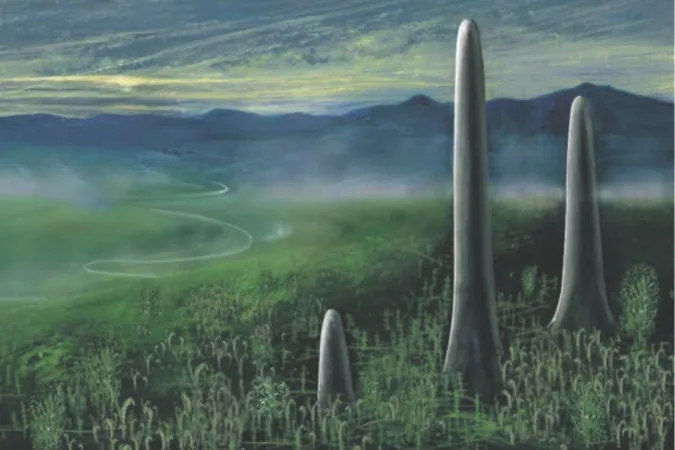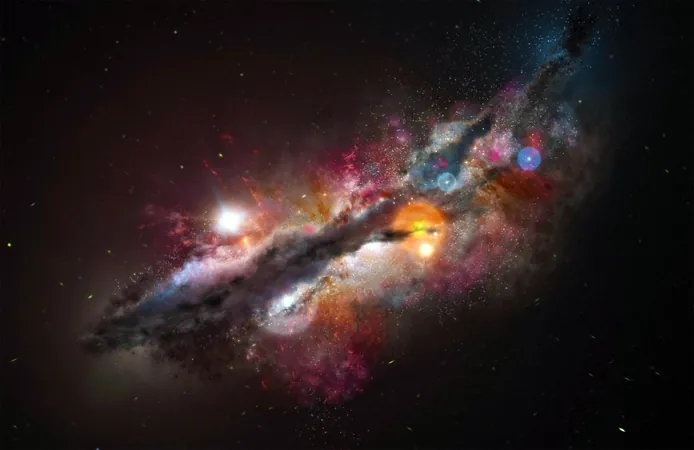
Unveiling the Mystery of Prototaxites: A Giant Life Form That Defies Classification!
2025-03-28
Author: Ken Lee
In a remarkable revelation about ancient life on Earth, scientists have shed light on the enigmatic Prototaxites, colossal organisms that flourished on land hundreds of millions of years ago. Standing as tall as 26 feet (8 meters) and resembling tree trunks composed of intricate structures, these creatures have long baffled researchers regarding their place in the vast tree of life.
Recent research from a team in the United Kingdom indicates that Prototaxites may belong to an entirely unknown lineage of multicellular eukaryotes—creatures that share cellular structures with all plants and animals. This groundbreaking study, shared on bioRxiv, emphasizes that Prototaxites cannot be classified within existing life branches, provoking excitement in the scientific community.
An Ancient Debate Resolved?
For over 150 years, the exact classification of Prototaxites has stirred controversy, primarily revolving around the idea that it might be ancient fungi. However, the team, including Corentin Loron from The University of Edinburgh’s School of Physics and Astronomy, argues against this long-standing hypothesis. Through extensive examination of the Prototaxites taiti species, they found compelling evidence that starkly differentiates it from contemporary fungi found in the Rhynie chert—a prolific fossil site dating back to the Early Devonian period (approximately 408 to 360 million years ago).
By comparing Prototaxites with known fungi, researchers highlighted that this remarkable organism was not only the largest entity in its ecosystem but also featured a unique anatomical structure completely distinct from any known fungi. The absence of chitin or chitosan—critical components of fungal cell walls—further supports the idea that Prototaxites does not fit into conventional classifications.
New Insights into Prototaxites’ Structure and Lifestyle
Loron and his colleagues identified three defining characteristics of Prototaxites: intricate tube-like structures, features similar to lignin (the substance that enhances plant rigidity), and a heterotrophic mode of existence—indicative of its ability to consume other organisms for sustenance. These findings reinforce the organism's peculiarity and suggest that it belonged to a completely distinct group of extinct eukaryotes.
As all life on Earth is categorized into three basic domains—Bacteria, Archaea, and Eukaryotes—this discovery hints at the potential existence of an additional, unrecognized realm of life. While the authors of the study stop short of formally introducing a new kingdom, the implications of their research could potential shift our understanding of biological classification altogether.
The Implications of Discovery
Could there be entire kingdoms of life that historians and scientists have yet to discover? This landmark study not only inspires curiosity about life forms long gone but also prompts deeper questions about evolutionary biology and the myriad ways life can manifest on our planet. As the scientific community digs deeper into Earth’s ancient past, we may yet unearth more astonishing secrets that challenge our current understanding of life itself.
Stay tuned for more updates—who knows what other prehistoric mysteries await discovery beneath the layers of time!

 Brasil (PT)
Brasil (PT)
 Canada (EN)
Canada (EN)
 Chile (ES)
Chile (ES)
 Česko (CS)
Česko (CS)
 대한민국 (KO)
대한민국 (KO)
 España (ES)
España (ES)
 France (FR)
France (FR)
 Hong Kong (EN)
Hong Kong (EN)
 Italia (IT)
Italia (IT)
 日本 (JA)
日本 (JA)
 Magyarország (HU)
Magyarország (HU)
 Norge (NO)
Norge (NO)
 Polska (PL)
Polska (PL)
 Schweiz (DE)
Schweiz (DE)
 Singapore (EN)
Singapore (EN)
 Sverige (SV)
Sverige (SV)
 Suomi (FI)
Suomi (FI)
 Türkiye (TR)
Türkiye (TR)
 الإمارات العربية المتحدة (AR)
الإمارات العربية المتحدة (AR)